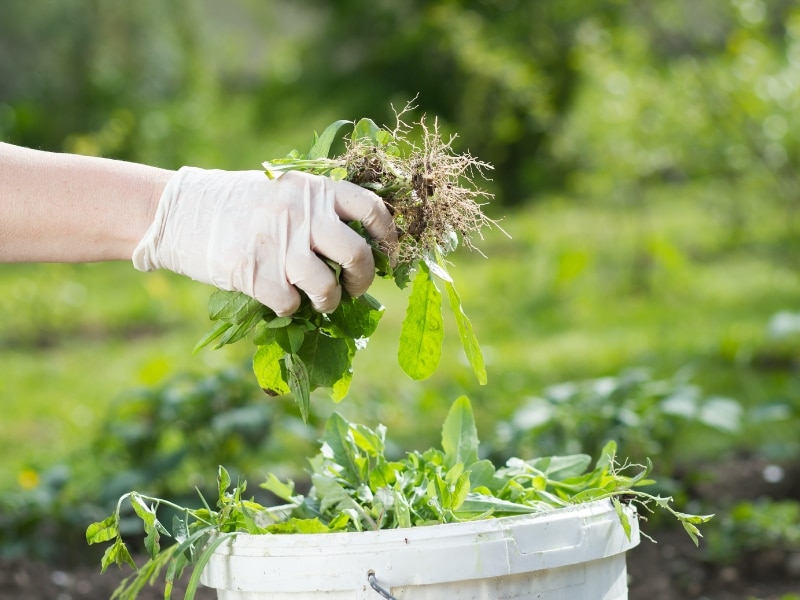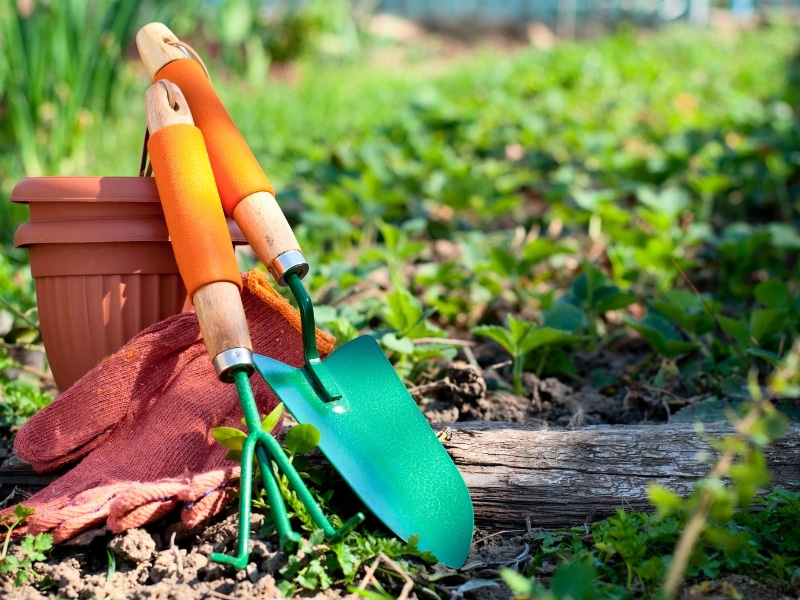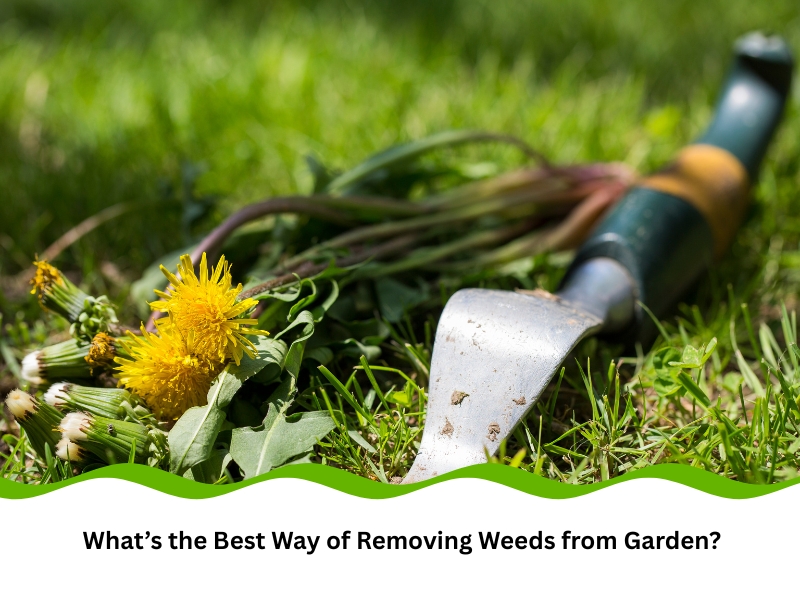If you’ve spent time nurturing a garden, you’ve likely battled your fair share of weeds. Whether they’re sprouting between pavers or choking out your veggie patch, weeds are persistent, competitive, and quick to spread. Tackling them effectively isn’t just about aesthetics—removing weeds from garden spaces improves plant health, boosts soil structure, and helps your landscape thrive long-term. This article will walk you through when and how to act, which methods work best, and why some weeds keep returning.
Why is removing weeds from the garden often more difficult than expected?
Many gardeners underestimate how stubborn weeds can be. You may pull them today only to see them reappear next week, stronger than ever.
- Taproots grow deep underground, especially in species like dock and dandelion, making it easy to snap them and leave parts behind to regrow.
- Soil disturbance can trigger dormant seeds, allowing hundreds of new weeds to sprout within days of your weeding session.
- Moist, shaded areas give weeds an edge, as these conditions help certain species like oxalis or nutgrass take hold and spread rapidly.
- Some species reproduce rapidly, using rhizomes, stolons, or even broken leaves to regenerate from nearly any fragment left in the soil.
If you’re wondering why weeds keep returning despite removal efforts, the answer often lies beneath the surface. Effective removal involves more than tugging—it’s about understanding how weeds regenerate and breaking that cycle at the root.
How can removing weeds from the garden improve soil quality?
Healthy soil is the foundation of a flourishing garden, and weeds are one of its greatest threats. Pulling them up may seem cosmetic, but the effects run much deeper.
- Weeds leach vital nutrients from the soil, leaving less for your intended plants, which can lead to weak or stunted growth.
- Unwanted growth disturbs the soil’s natural structure, leading to compaction, erosion, and difficulty absorbing water or air.
- Some species secrete inhibitory chemicals, which can block seed germination or limit root development of surrounding plants.
- Soil microbes struggle in weedy environments, which reduces the breakdown of organic matter and the availability of nutrients for crops.
By staying on top of weed control, you give your soil a chance to recover, balance microbial life, and support more vigorous plant development.
When should you prioritise removing weeds from your garden?
Timing makes a big difference in how successful your weeding efforts will be. Acting early can save you hours of work later.
- Tackle weeds in early spring, when the soil is soft and the plants are young with weaker root systems.
- Remove after light rain, which makes roots easier to pull out cleanly without snapping or leaving fragments behind.
- Target during flowering or early seed stages, as this halts their reproduction and reduces future infestations.
- Schedule weeding monthly, even during slower growth periods, to prevent early-stage weeds from gaining ground.
Gardening strategies that focus on understanding the importance of early weed detection and control give you a chance to act before invasive species spread, making long-term management far more effective.

Which natural methods are most effective for persistent weeds?
Harsh chemical herbicides may seem like the quick fix, but natural methods are often just as effective, with fewer side effects for the environment or your soil.
- Smothering with newspaper and mulch stops photosynthesis, cutting off the weed’s ability to grow without harming nearby plants.
- Boiling water or vinegar breaks down cell walls on contact, particularly effective for surface weeds on pathways or beds.
- Flame weeding, using a propane torch, kills top growth quickly and can sterilise weed seeds in soil for driveways or patios.
- Planting cover crops like clover helps outcompete weeds for space and nutrients while also improving soil nitrogen levels.
A natural approach also helps maintain soil health over time, which benefits all other aspects of your garden’s ecosystem.
Could the wrong tools sabotage your weed removal efforts?
Yes—using the wrong gear often creates more problems than it solves. A spade in clay soil or dull shears in thick turf can turn weeding into a full-blown battle.
- Dandelion pullers target deep-rooted weeds with minimal soil disruption.
- Oscillating hoes slice off top growth efficiently in large garden beds.
- Gardening forks can loosen compacted areas, making root removal easier.
- Hand tools with ergonomic handles reduce strain for long sessions.
Using tools that suit your soil type, weed structure, and garden layout makes a tough job easier—and stops you from accidentally spreading root fragments.

What role does mulching play in long-term weed prevention?
Mulching is a practical step that goes beyond surface-level garden maintenance. It’s one of the easiest ways to prevent weeds from sprouting in the first place—no need to pull what never grows.
- Organic mulches block sunlight, starving weed seeds before they can germinate.
- A thick layer reduces watering needs, creating healthier conditions for your plants.
- Decomposing mulch improves soil quality, feeding beneficial organisms over time.
- Prevents weed seeds from landing directly on the soil, slowing their spread.
Incorporating mulch early in the growing season can drastically cut down on weeding time. For those working without synthetic herbicides, there are natural methods to prevent weeds without chemicals that can be easily integrated into existing garden routines.
Mulch Type | Weed Control Strength | Soil Benefit Level | Lifespan |
Sugarcane mulch | High | Moderate | Short-term |
Bark chips | Moderate | Low | Long-lasting |
Straw | High | High | Medium |
Compost | Low | Very High | Short-term |
How does consistent weeding transform your garden over time?
Persistence pays off. Regular weeding delivers more than short-term tidiness—it creates the conditions for a thriving ecosystem.
- Native plants outcompete weeds when they’re not under stress.
- Healthy roots spread evenly, preventing soil erosion and nutrient loss.
- Fewer pests and diseases gain a foothold when weeds aren’t hosting them.
- The garden becomes easier to manage, with less work required each season.
If you’re starting fresh or reassessing your strategy, it’s worth taking the time to explore reliable methods for removing weeds from your garden environment. It’s not about working harder—it’s about working smarter.
Final Thoughts
Staying on top of weeds takes effort, but it pays off in healthier soil and stronger plants. The key is knowing when to act and choosing methods that suit your space. If you’re unsure where to begin, speak to the team at A Bargain Gardener about your weed concerns.


